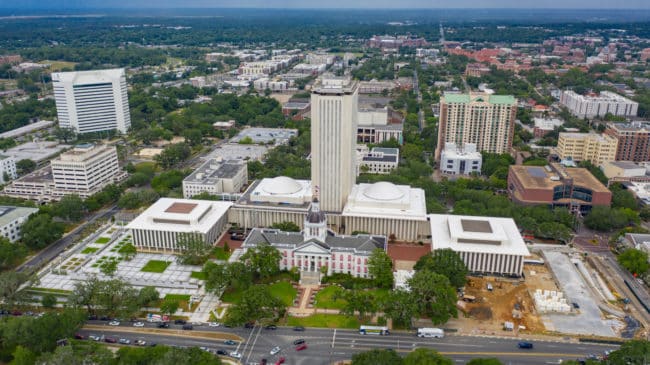Access to gainful employment is essential to the economic success of Floridians and their families. An estimated 13.6 percent of people in Florida live below the poverty line, but the poverty rate is much lower among those who are able to find employment. In fact, just 5.1 percent of workers and 2.2 percent of full-time, year-round workers live below the poverty line, compared to 11.8 percent of all Americans.
Nevertheless, state-level occupational licensing policies make it harder for people to find work by blocking entry into many lower- and middle-income jobs. An occupational license is essentially a government-issued stamp of approval to enter licensed occupations including barber, athletic trainer, or pest control applicator. Typical requirements to obtain a license include fees, training, and examinations––each of which adds to the burden of securing employment.
In the early 1950s, less than five percent of workers in the U.S. were required to hold a state-issued license. Today, that figure has climbed to nearly 23 percent of full-time workers. A White House report from the Obama administration found that the vast majority of this growth––roughly two-thirds––is attributable to an increase in the number of occupations requiring licensure rather than changes in workforce composition. While licensing was originally intended to protect public health and safety, the same report found little evidence to suggest licensing improves quality. Moreover, many occupations that are licensed today do not present a clear threat to consumers. For example, Florida is one of only three states that license interior designers to work in commercial settings.
Licensing policies aren’t just unnecessary; they also impose considerable costs on workers and consumers. A recent report estimated that occupational licensing costs Florida approximately 129,254 jobs and between $459.9 million and $11.5 billion in deadweight loss and misallocated resources annually.
While deadweight loss refers to lost output, misallocated resources account for resources directed away from their most valuable uses which more accurately reflect the economic costs of licensing. Fortunately, a wide variation in licensing policies across states suggests that there is ample room for reform. An analysis of state licensing laws by the Institute for Justice found that Florida has the 5th most burdensome licensing laws for lower- and middle-income occupations. On average, licensure in Florida requires $318 in fees and 693 days (days lost) of education and experience compared to the national average of $267 and one year. While $318 might seem reasonable, it is more than three times the weekly grocery bill for an average Tampa household.
This report shows Florida could remove barriers to employment by eliminating unnecessary licenses and reducing the requirements for widely licensed occupations.

